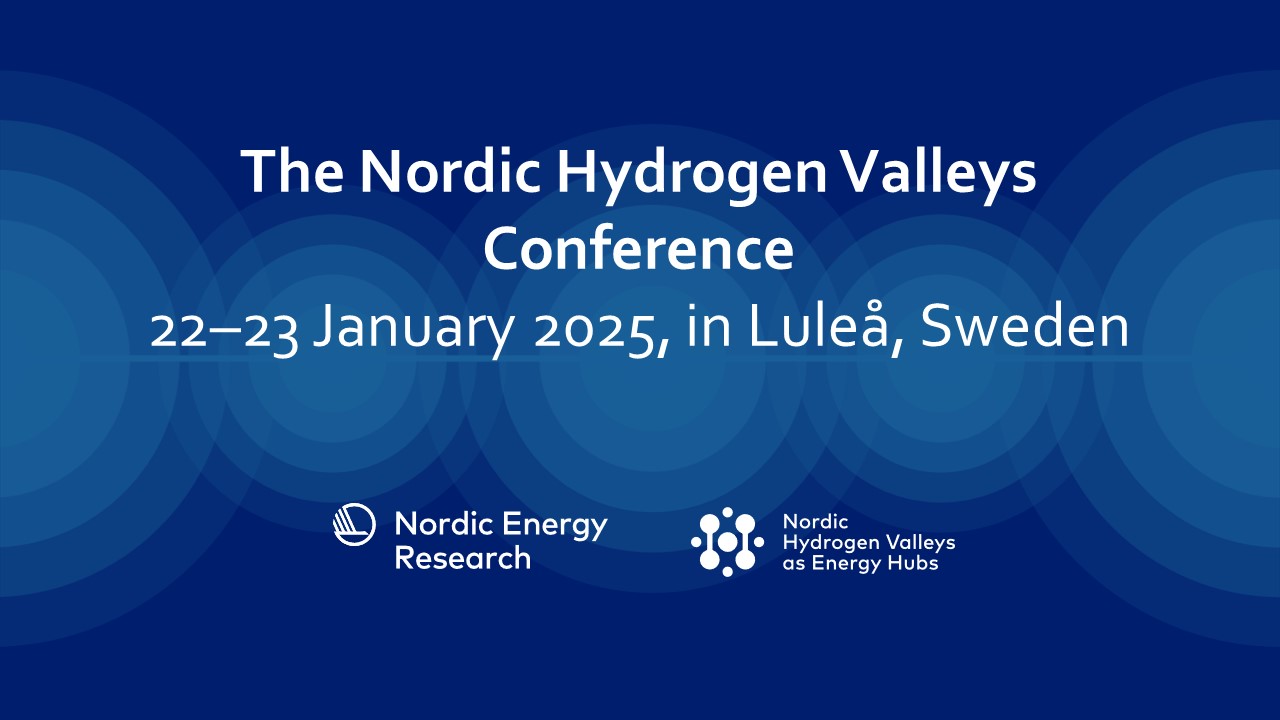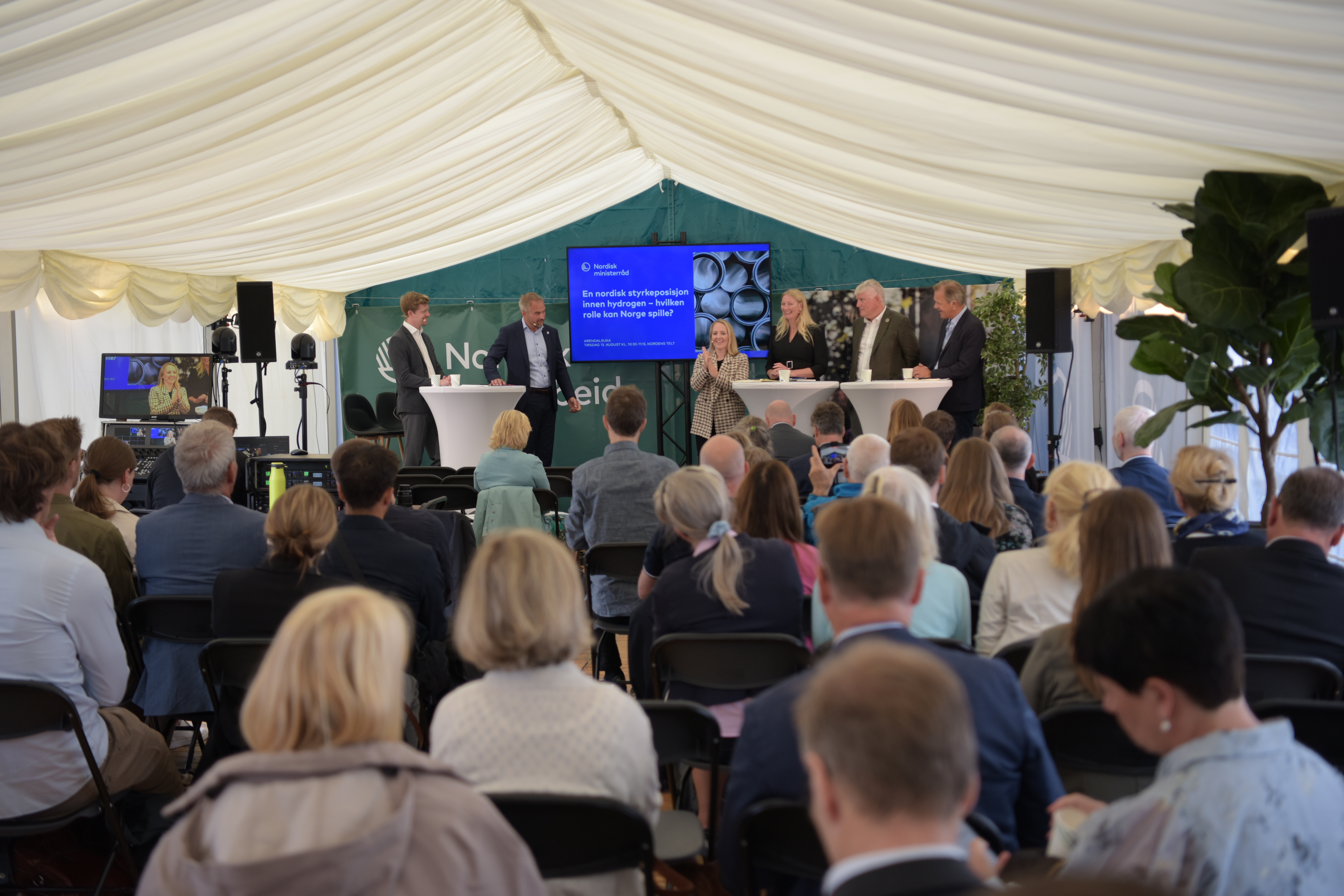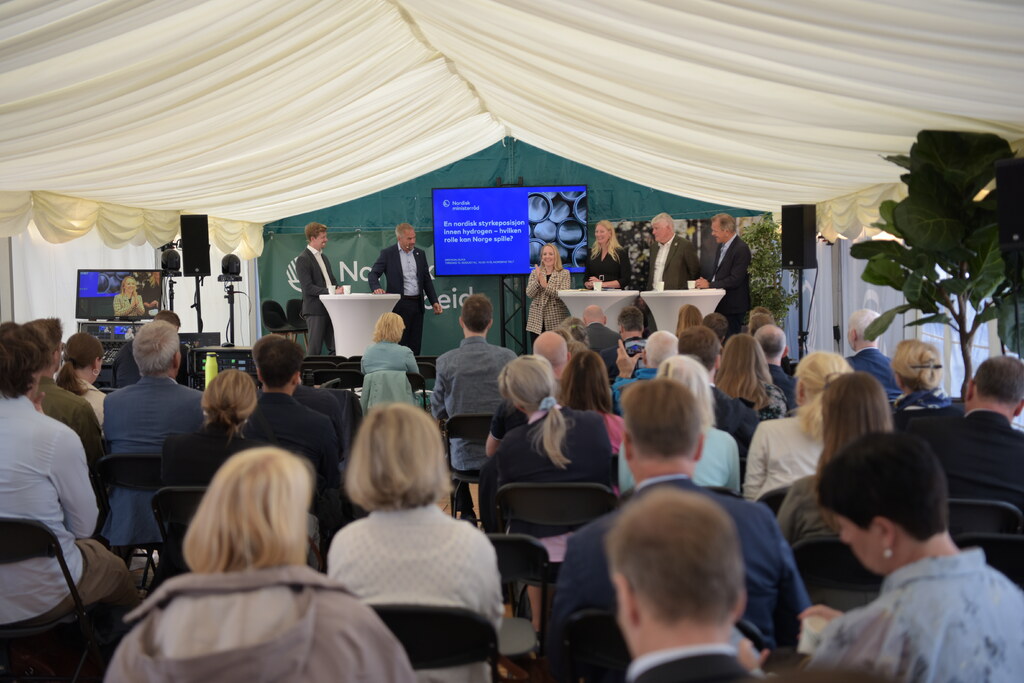
Great potential for a Nordic position of strength on clean hydrogen
This year, Nordic Energy Research participated in all the Scandinavian democracy festivals, hosting three sessions focusing on clean hydrogen. With valuable input from experts across sectors, we discussed the Nordics'…
This year, Nordic Energy Research participated in all the Scandinavian democracy festivals, hosting three sessions focusing on clean hydrogen. With valuable input from experts across sectors, we discussed the Nordics’ potential to assume an internationally leading role on clean hydrogen-based climate solutions. How can each Nordic country contribute to a shared Nordic position of strength within clean hydrogen? But also, in what ways can Nordic cooperation help promote and advance the national strengths related to clean hydrogen? These questions were highlighted from a Danish, Swedish, and Norwegian point of view respectively, at Folkemødet, Almedalsveckan, and Arendalsuka.
A common feature of all our sessions was a presentation of early results from the report “Mapping Nordic Hydrogen Valleys“, which will be launched this autumn. Based on the findings thus far, the democracy festival panellists shared knowledge on the possibilities of clean hydrogen and the development of Nordic hydrogen valleys (substantial cluster of hydrogen value chains), both as a solution on the climate crisis and as a significant business opportunity as well. There was a strong agreement on the value of the numerous hydrogen projects in the Nordic region. However, each Nordic country has its own area of expertise to bring to the hydrogen table, as their different strengths can be combined into a joint Nordic position of potential global frontrunners on clean hydrogen production.
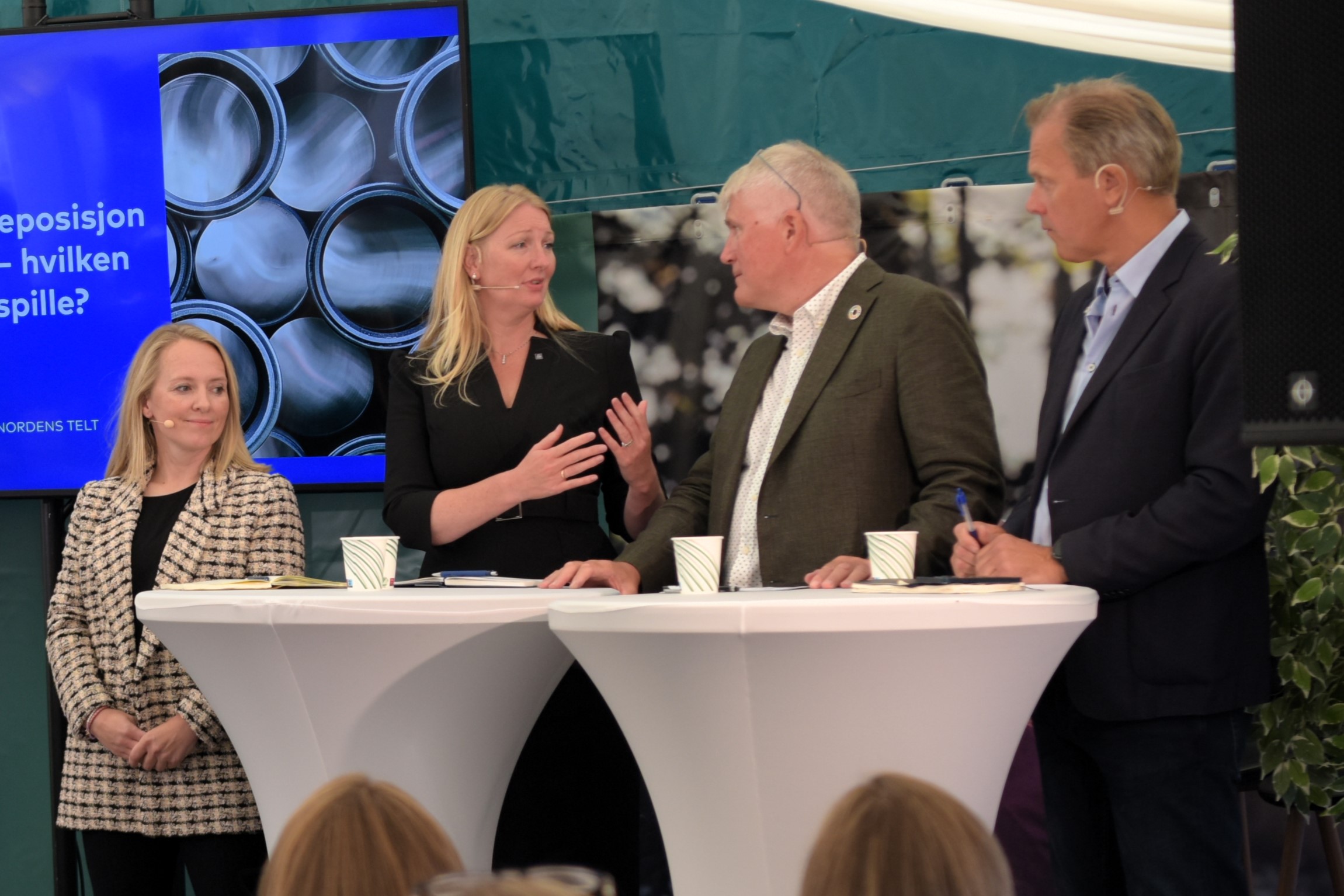
From left: Ada Martine Jakobsen, CEO, Maritime CleanTech, Edina Ringdal Wickholm, Director Decarbonisation Policy and Partnerships, Yara International, Nils Røkke, Executive Vice President Sustainability, SINTEF, and Fridtjof Unander, Chief Economist, Aker Horizons. Photo: Nils Arne Haagensen.
Arendsalsuka
According to the Mapping Nordic Hydrogen Valleys report’s initial results, Norway holds a lot of promise in the development of future hydrogen valleys (substantial cluster of hydrogen value chains) due to a high amount of planned hydrogen projects. Norway benefits from high access to hydropower for green hydrogen production but is especially distinguished by having a unique potential for blue hydrogen, which can be used to significantly increase production capacity.
The Norwegian potential was also highlighted by the panel of experts during Nordic Energy Research’s session at Arendalsuka. There was wide agreement on the Nordic region’s exceptional situation of trust between partners across sectors. For instance, Fridtjof Unander, Chief Economist, Aker Horizons, emphasised good Nordic partnerships – Sweden with its industry, Denmark with its maritime business. Additionally, Unander mentioned Norway’s role in ensuring a sustainable and secure energy supply for Europe, where hydropower can be used as a stabiliser to ensure steady production. Furthermore, he said that Norways’s blue hydrogen potential needs to be utilised, as it is the only solution that can be scaled up fast enough to meet the growing demand in Europe. The importance of Nordic-European cooperation was also pointed out by Nils Røkke, Executive Vice President Sustainability, SINTEF. At the same time, he pointed out that Norwegian funding for research on hydrogen development and CCS has decreased over the last three years and can affect our chances of reaching the 2030 targets.
There was a strong agreement among the panellists on the need for a faster progress within hydrogen. Edina Ringdal Wickholm, Director Decarbonisation Policy and Partnerships, Yara International, pointed to over 100 years of experience with safe hydrogen and ammonia production, transport and use, stressing the will to share this knowledge and experience with the Nordics and the world. Ada Martine Jakobsen, CEO, Maritime CleanTech, emphasised that Norwegian maritime companies, although being world leaders in initiating hydrogen projects, are not moving forward fast enough. Norwegian maritime clusters are responsible for many of the ‘world’s firsts’, but now the industry needs investment to further develop the sector. We have great results from our pilot projects – now we need to secure funding to develop the entire value chain, according to Jakobsen.
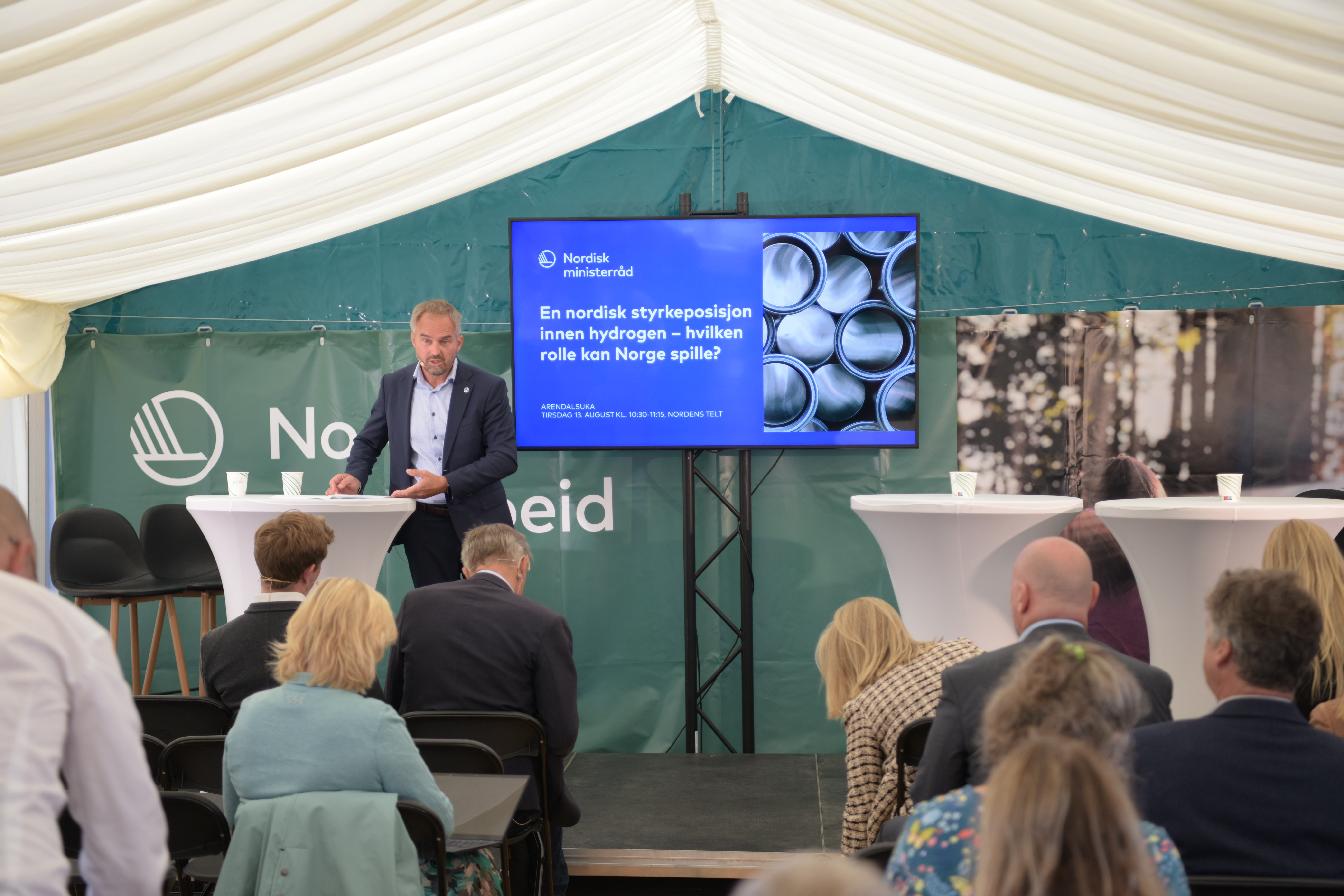
Moderator Rune Volla, Director, the Research Council of Norway. Photo: Nils Arne Haagensen.
Almedalsveckan
According to the Mapping Nordic Hydrogen Valleys report’s initial results, Sweden holds a lot of promise in the development of future hydrogen valleys (substantial cluster of hydrogen value chains) due to a high amount of planned hydrogen projects. One of the strengths of Sweden includes a high access to biomass production and thereby a vast potential for hydrogen and biomass integration.
The discussions about hydrogen were viewed through a Swedish lens during our well-attended session at Almedalsveckan, where it was made clear that Sweden has a great deal to add in strengthening the Nordic hydrogen role. There was a broad consensus among the panellists that Nordic cooperation in the energy field is important for Sweden, and they called attention to the transition of the maritime sector as well as the production of green hydrogen for fossil-free steel production. For example, Christer Bruzelius, Senior Partner and Project Owner of Gotland Tech Development, described how well suited the Gotland ferries are to run on hydrogen, but that there is a lack of regulations that enable a hydrogen economy with sufficient production in place when the ferries will be ready in just a few years.
Both Cecilia Wallmark, Director of the hydrogen initiative CH2ESS at Luleå University of Technology, and Bjorn Aronsson, Managing Director at Hydrogen Sweden, emphasised that Sweden has good conditions for hydrogen developments, such as well-developed research collaborations with the other Nordic countries and that academia and industry work closely together. However, Aronsson also cautioned that efforts are urgent to realise the potential of hydrogen and that a national hydrogen strategy is needed to achieve the 2030 goals.
In addition, the energy policy spokespersons Camilla Brodin from the Christian Democrates and Fredrik Olovsson from the Swedish Social Democratic Party highlighted the importance of increased cooperation between authorities at all levels, of expanding the Swedish electricity system, and how public procurement can be used as a tool to bring about change.
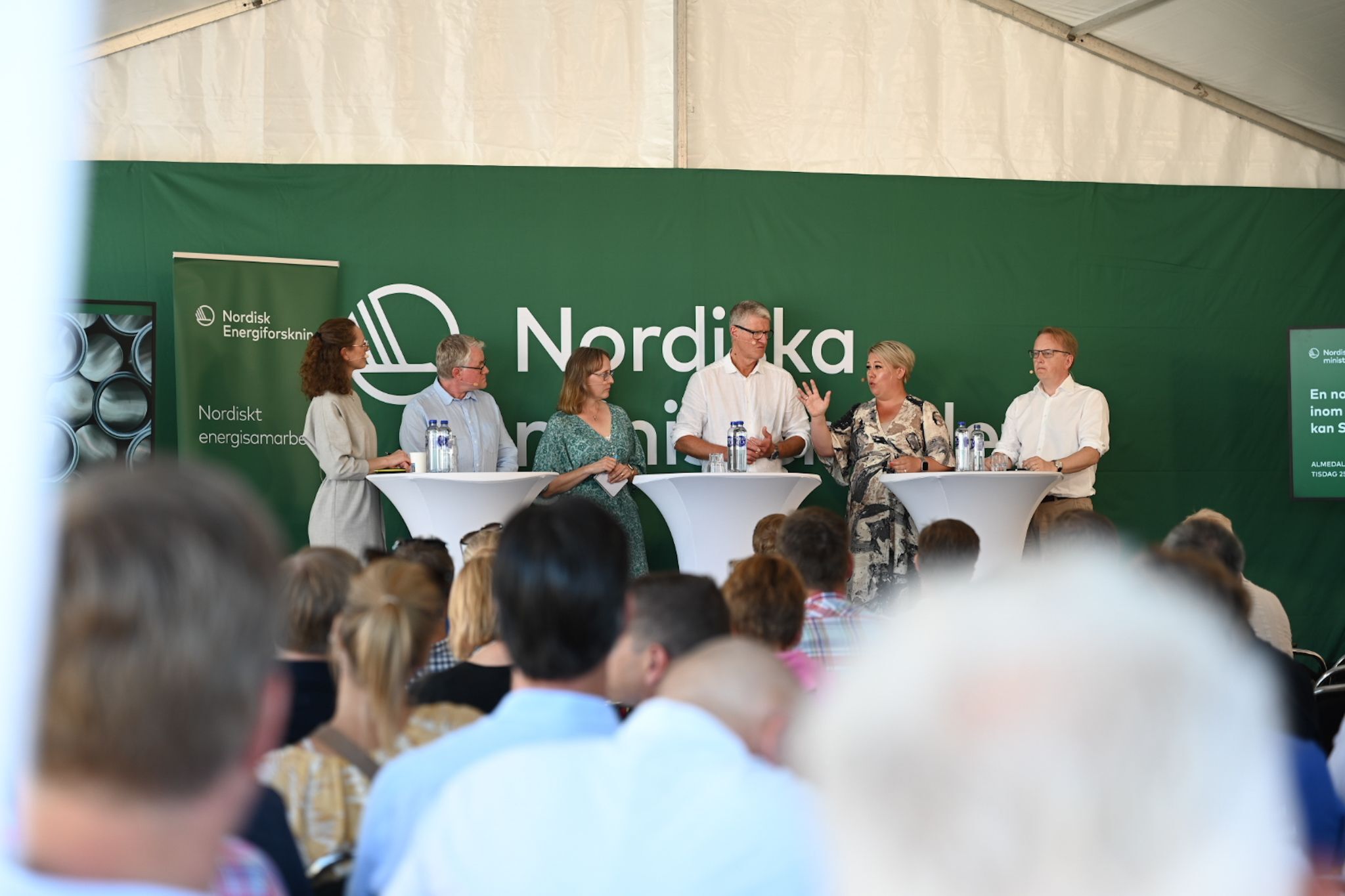
From left: Moderator Marie Claesson, Bjorn Aronsson, Managing Director at Hydrogen Sweden, Cecilia Wallmark, Director of the hydrogen initiative CH2ESS at Luleå University of Technology, Christer Bruzelius, Senior Partner and Project Owner of Gotland Tech Development, Camilla Brodin, Spokesperson on energy policy for the Christian Democrates, and Fredrik Olovsson, Spokesperson on energy policy for the Swedish Social Democratic Party. Photo: Annelie Riggo.
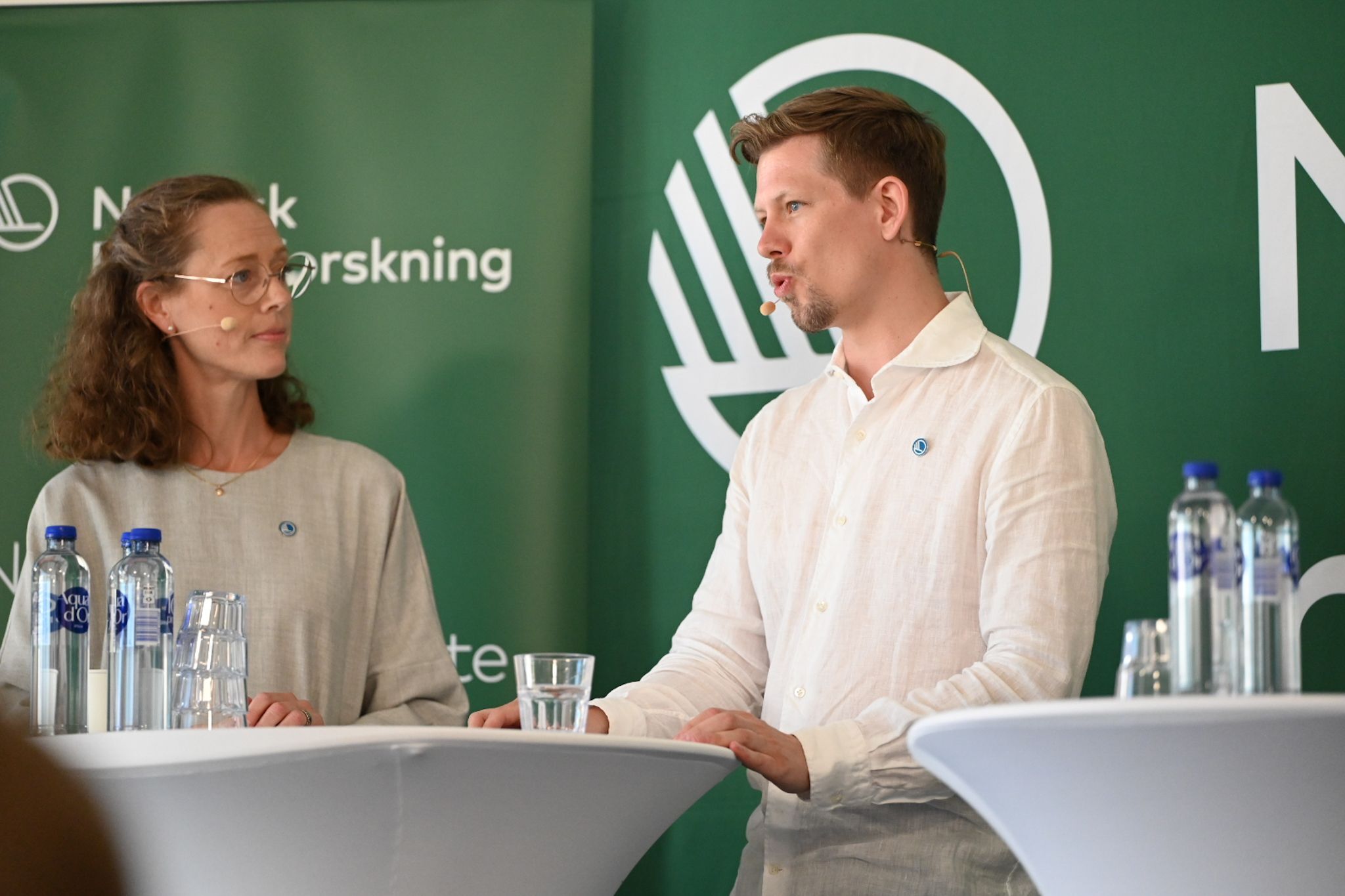
Marie Claesson, Chair of the Board for Nordic Energy Research and Program Manager of the Swedish Energy Agency, and Kevin Johnsen, COO of Nordic Energy Research. Photo: Annelie Riggo.
Folkemødet
When we held our session at Folkemødet, we asked how Denmark can contribute to and benefit from Nordic cooperation for the development of hydrogen value chains.
According to the early results of the Mapping Nordic Hydrogen Valleys report, Denmark has at this moment in time the highest amount of hydrogen valleys (substantial cluster of hydrogen value chains) in the Nordics. A specific strength of Denmark in this regard includes high levels of wind power and especially a great access to and potentials for harvesting offshore wind energy for green hydrogen production.
Drawing from these findings, Marie Münster, Professor in Energy System Analysis and member of the Danish Council on Climate Change, stressed the need for continuous research, e.g., on hydrogen as building blocks within the chemical industries. Marianne Bigum, Member of the Danish Parliament (and member of the Nordic council), and Environmental Engineer, Green Left, emphasised the biodiversity crisis in relation to the space needed for green hydrogen production facilities which should be held up against the need of cohesive areas for ensuring biodiversity. In this regard the climate and biodiversity crises raise the issue of clever spatial planning when it comes to green hydrogen production based on e.g., wind energy.
Offshore wind power was commented by Tejs Laustsen Jensen, CEO, Hydrogen Denmark, who said that it is crucial to produce as much green hydrogen as possible if we are to succeed in the transition from a fossil fuel-based energy system to a green energy system and mentioned Germany as an example of a country that will need a vast amount of clean hydrogen in the green transition of their huge industries. Denmark has an immense potential and responsibility for harvesting offshore wind for green hydrogen production if we are to solve the climate crisis. Stine Grenaa Jensen, Vice President, System Development, Energinet, concurred to this, saying that there is a huge need for clean hydrogen due to its pivotal part in the green transition. Stine also stressed the need for Nordic cooperation, e.g. when it comes to the development of a hydrogen grid system.

Marie Münster, Professor in Energy System Analysis and member of the Danish Council on Climate Change, Tejs Laustsen Jensen, CEO, Hydrogen Denmark, and Marianne Bigum, Member of the Danish Parliament and Environmental Engineer, Green Left.
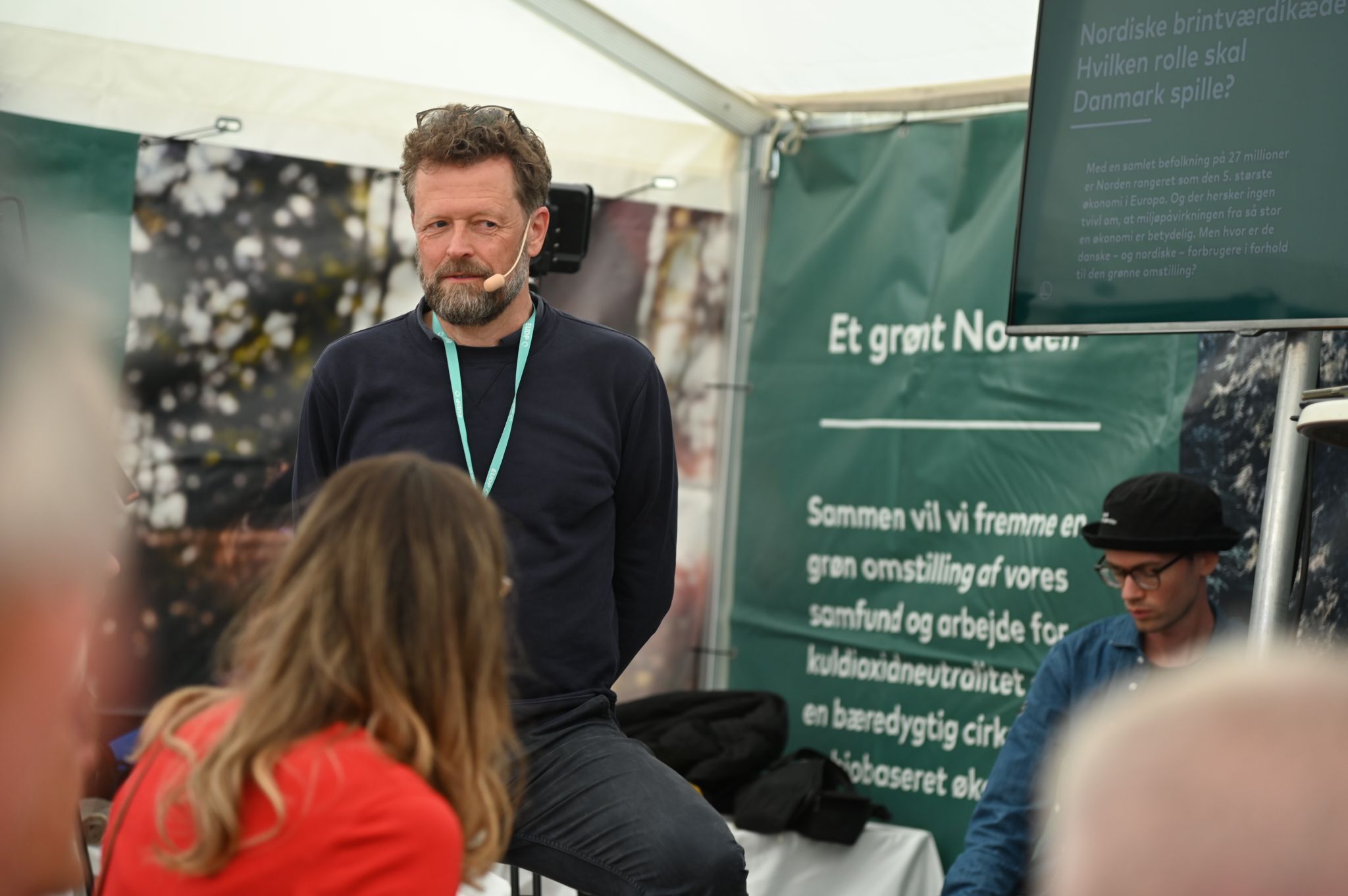
Moderator Claus Meineche, Head of Office for EUDP, Danish Energy Agency.
We would like to thank all the panelists, audience members, and organisers for contributing to interesting and highly relevant discussions at all our sessions this summer!
Nordic Hydrogen Valleys Conference 2025
Would you like to delve further into the potential of Nordic hydrogen and hydrogen valleys? Save the date for the upcoming Nordic Hydrogen Valleys Conference! The conference takes place in Luleå, Sweden, on 22–23 January 2025, where you will get to meet the five projects funded within the Nordic Hydrogen Valleys as Energy Hubs Programme as well as explore issues ranging from technical recommendations to social acceptance.
Registration to the conference opens in September.
